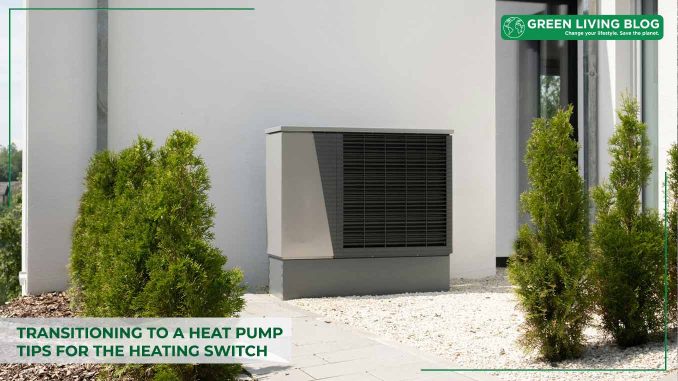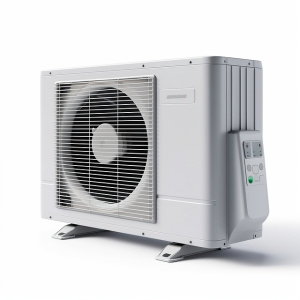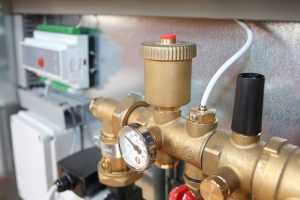
If you’re thinking about making sustainable upgrades to your home, transitioning to a heat pump could be a good goal.
These options are often more efficient than other possibilities, and they release fewer emissions than gas boilers, making them eco-friendly.
You can do several things to make the switch easier to manage.
1. Understand That Heat Pumps Can Work Well in Cold Climates

A common belief is that heat pumps won’t get good results for people living in cold areas. Individuals who might otherwise be open to using them could get the impression they’re out of the question.
However, heat pumps are popular in Nordic countries, dispelling the belief that you should only consider them if living somewhere relatively warm. In Norway, two-thirds of households have heat pumps. People generally hold high opinions of them, too, with some saying they can wear T-shirts in the winter because their homes are so warm.
The U.S. Department of Energy launched the Residential Cold Climate Heat Pump Challenge. As you might guess from the name, this effort involves working with heat pump manufacturers and others to increase the availability of products made for chillier areas of the country. People who see them becoming more widespread should feel more confident about installing them.
2. Calculate Your Typical Heating and Cooling Bills
Many people initially become interested in heat pumps because they’d like to lower the cost of heating and cooling their homes. Heat pumps move warmth rather than making it, so they can be about 25% less expensive to run than your gas boiler.
The internet offers numerous calculators to help you determine the average savings of installing a heat pump versus your existing climate control setup. After getting some basic figures, contact a local heat pump installation company or green energy nonprofit to see if they have further insights on whether a heat pump would give you the expected savings.
You may also want to schedule an appointment with someone who can assess your house and determine its heat pump suitability. That expert can tell you about the expected installation costs, the associated time frame and anything else to help you make an informed choice about how to proceed.
3. Learn About Available Rebates and Cost-Saving Programs
Many areas have initiatives that allow qualified households to save on heat pump installation. If you live in the United States, federal tax credits of up to $3,200 per year make installing a heat pump more financially attractive.
State-based programs also exist, so check into the application process. One such option in California gave successful applicants more than $53 million in two years, and the money went toward installing several thousand heat pumps.
Give yourself plenty of time to learn about all applicable programs’ stipulations. For example, some mention that you can claim the credits on heat pumps for homes getting upgrades but not newly built ones. Others may specify that only certain models qualify for rebates. Knowing all the details in advance is an ideal way to choose the most appropriate offers to save you money and offer the best chances of success.
4. Talk to People Who’ve Recently Gotten Heat Pumps

Speaking to individuals you know who recently installed heat pumps is a good idea too. Whether they did so for sustainability or otherwise, their experiences could provide useful insights to shape your expectations.
Ask them about the heat pump types and pros and cons and what they wish others had told them before they chose heat pumps. Get the details about their models and the companies that handled the installation.
In the best-case scenario, you should have conversations with people in your area or those whose heating and cooling demands are most like yours. Any information they give will be maximally relevant to your circumstances.
5. Make Heat Pumps Part of a Climate-Friendly Future
People evaluating how their choices create a sustainable future can see how heat pumps fit into their plans. If you’re coming to the same conclusion but still have a few hesitations, researching to find the information needed is one of the best ways to resolve doubts.
It’s also useful to consider that almost all transitions are a little unsettling at first. Most people become more open to changes they’ve made after seeing the associated payoffs.
![]()
Author Profile
- Online Media & PR Strategist
- Blogger and Educator by Passion | Senior Online Media & PR Strategist at ClickDo Ltd. | Fascinated to Write Lifestyle Blogs in News & Education I have completed a journalism summer course at the London School of Journalism and manage various blogs.
Latest entries
 LeisureApril 16, 202510 Best Green UK Hotels for Eco-Tourists
LeisureApril 16, 202510 Best Green UK Hotels for Eco-Tourists Best practicesApril 14, 20258 Best Ways to Reduce Your Carbon Footprint
Best practicesApril 14, 20258 Best Ways to Reduce Your Carbon Footprint Green Expert GuidesMarch 28, 2025Lisbon Living: Where Sustainable Charm Meets Urban Energy
Green Expert GuidesMarch 28, 2025Lisbon Living: Where Sustainable Charm Meets Urban Energy EnvironmentJanuary 21, 2025Buying Eco-Friendly Homes: 6 Eco Questions to Ask Your Real Estate Agent
EnvironmentJanuary 21, 2025Buying Eco-Friendly Homes: 6 Eco Questions to Ask Your Real Estate Agent






Leave a Reply
You must be logged in to post a comment.